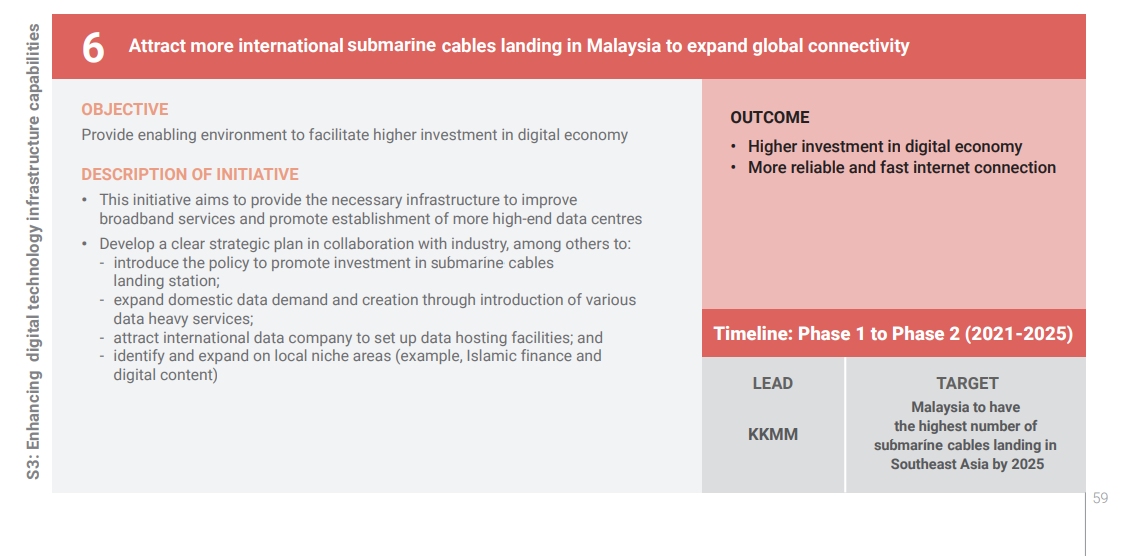The MyDIGITAL initiative, which will be executed via the Malaysia Digital Economy Blueprint, is a strategic step in the right direction to further grow Malaysia’s Digital Economy and anticipated to contribute 22.6% of Malaysia’s gross domestic product (GDP), while creating 500,000 new jobs.
For continued growth of the Digital Economy and even higher than the 22.6% GDP contribution in years ahead, Malaysia would need very stable internet infrastructure that’s robust and reliable as internet usage would inevitably surge in the years ahead for government, businesses and the rakyat.
As it stands, a growing number of data centre operators have moved and are moving to Malaysia to enhance data speeds to cater for densely populated cities within the Southeast Asian region. This includes hyper scale data centres, which are owned and operated by company it supports, and which offer robust, scalable applications and storage portfolio of services to individuals or businesses.
Malaysia has its strengths in internet infrastructure due to our strategic geographical location, ease of access and relatively lower cost of entry.
Our country has had some strategic wins from both local and international providers. Foreign players with data centres operating in Malaysia include Alibaba, Hitachi, NTT, Microsoft, IBM and Bridge Data Centres.
That said, government policies should always be investor friendly if we are to continually attract foreign investors into Malaysia.

One such strategic thrust announced by the Prime Minister is to attract more submarine cables to land into Malaysia to expand global connectivity, with desired outcomes being higher investments and more reliable and faster internet connection.
The target under this strategic thrust is for Malaysia to have the highest number of submarine cables landing in SEA by 2025.
As it stands, this is currently an area of concern with foreign multinationals who had invested in submarine cables into Malaysia.
The elephant in the room is the fact that cabotage exemption for foreign vessels to conduct undersea cable repairs was revoked last November.
This has resulted in undersea cable repairs taking up to 27 days in Malaysia which is way behind other countries in Southeast Asia. As a comparison, undersea cable repairs are said to take 20 days in the Philippines, 19 days in Singapore and 12 days in Vietnam.
For Malaysia to attract more submarine cable investments, this cabotage issue needs to be resolved as soon as possible; and specifically that cabotage exemption for foreign vessels to conduct undersea cable repairs to be reinstated soonest possible.
Since the Prime Minister has placed on record this strategic thrust as a priority, government ministries and agencies should follow suit and not be a stumbling block for Malaysia to realise its aspirations of being a fully-fledged Digital Economy.
This opinion piece was contributed by Chiew Kok Hin, the Chairman of Malaysia Internet Exchange (MyIX). If you have an article or opinion that you would like to contribute for the benefit everyone, share it with us here.








